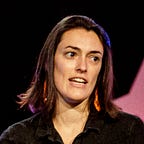Secrets of Successful Cloud Foundry Adopters
Takeaways from Cloud Foundry Summit Silicon Valley 2017
1100 deploys a month. 50% improvement in time to market. Same day bug fixes with no downtime. 1500 production services. MVP prototypes in four weeks. The measured effects of using Cloud Foundry (and associated people and process changes) are compelling.
But how did they get there? After all, change is hard. Picking the platform is the easy part. How did they get started? How did they gain momentum?
At the Cloud Foundry Summit in Santa Clara last week, each company had it’s own story. But after two and a half days of keynotes and presentations, some patterns emerged.
Do you Dojo?
Where to start? For writers, it’s the torture of the blank page. For platform operators? It’s the torture of having selected Cloud Foundry, but not yet having it running.
One word came up again and again from users that had achieved escape velocity: dojo. A “dojo” is literally a martial arts studio, where students train and practice. It’s not the actual place of battle, and the training is as much mental as it is physical. At Pivotal, it’s a 6–8 week engagement that’s more about teaching teams *how* to use the platform than just installing it.
At Garmin, it took a couple of tries for the practice to pay off. According to Jonathan Regehr (@jonathanregehr) and James Stueve (@james_stueve), the company showed up at at it’s second dojo ready to change. And the foundation they set up in that dojo is still running in production after over a year.
Melissa Chapman (@Bluesky142) and Brendan Aye of T-Mobile credited their first dojo as setting the stage for DevOps. The team used to take seven months and 72 steps to release new code. Now they’re fixing bugs same-day with zero downtime. The dojo provided a place to practice shared responsibility, which made it real.
Another customer I spoke to credited the dojo with taking six months off the time to get their first foundation deployed. Having experts on the ground ready to work proved to be a forcing function for their company. Now they’re enjoying the benefits of applications in production on the platform.
Having experts on the ground ready to work proved to be a forcing function for their company.
Large companies need help achieving lift-off in operating the Cloud Foundry platform. It’s not a technology problem. The organizational inertia grounding a company in the status quo needs to be offset by a powerful force. The immersive nature of the dojo forces changed behaviors for would-be platform operators.
Pick an app
I’ve written before about orienting work around a specific outcome and application. But I couldn’t have illustrated that point any better than Mojgan Lefebvre (@mojganlefebvre), SVP and CIO at Liberty Mutual. In her keynote, she walked through how the 100 year old insurance company released an app for brokers in the $240mn Australian market in six months. And that app performed better than industry averages.
But picking an app to jump start use of Cloud Foundry doesn’t have to be greenfield. T-Mobile chose their GetUsage application — a Java monolith with over 1,000 functions running on WebLogic. Within three months, they had it rebuilt as a Spring app running on Cloud Foundry taking 100 percent of production traffic.
Arguably, picking an existing application can provide a forcing function for faster change. That’s what Comcast did, picking three core applications to migrate first to Pivotal Cloud Foundry. That allowed them to bring forty percent of traffic on to the platform in their first year and paving the way for the remaining sixty percent. Today, Comcast has over 1500 developers deploying to the platform and over twelve thousand app instances supporting hundreds of millions of transactions per day.
Feed the groundswell for the developer “tipping point”
Another recurring theme was the rapid acceleration in adoption by developers within companies. Several companies described a “hockey stick” in the volume of applications being deployed to the platform. Home Depot noted a couple of months that saw month over month doubling of activity. Greg Otto (@iamgregotto) of Comcast echoed that with a graph of applications on an accelerating slope.
Several companies described a “hockey stick” in the volume of applications being deployed to the platform.
But these “tipping points” were not purely accidental, nor were they complete chaos. Education on cloud-native principles was often cited by practitioners with large-scale deployments. Garmin has launched Garmin Labs to immerse teams for 4–6 weeks at a time and “see what sticks”. Verizon noted an approach to “hammer [developers] with 12 Factor”.
T-mobile stressed the importance of outreach and consistency. T-Mobile offers monthly “PCF 101” classes. Lectures on “cloud-native” principles in the morning are followed by hands-on labs in the afternoon. Afterwards, developers are given an org or space for 90s to develop a PoC. And developers are gravitating to the platform in growing numbers.
By offering internal training, education, and immersion, these companies seeded a groundswell of internal demand for the platform. Even outside of formal programs, developers will talk. Word gets around about faster deployments and no tickets.
Demystifying success
Every company is different, so there is no guarantee that these steps are the recipe for success for you. But if you are starting down the path of using Cloud Foundry, or contemplating digital transformation, take note. The patterns of success are emerging.
